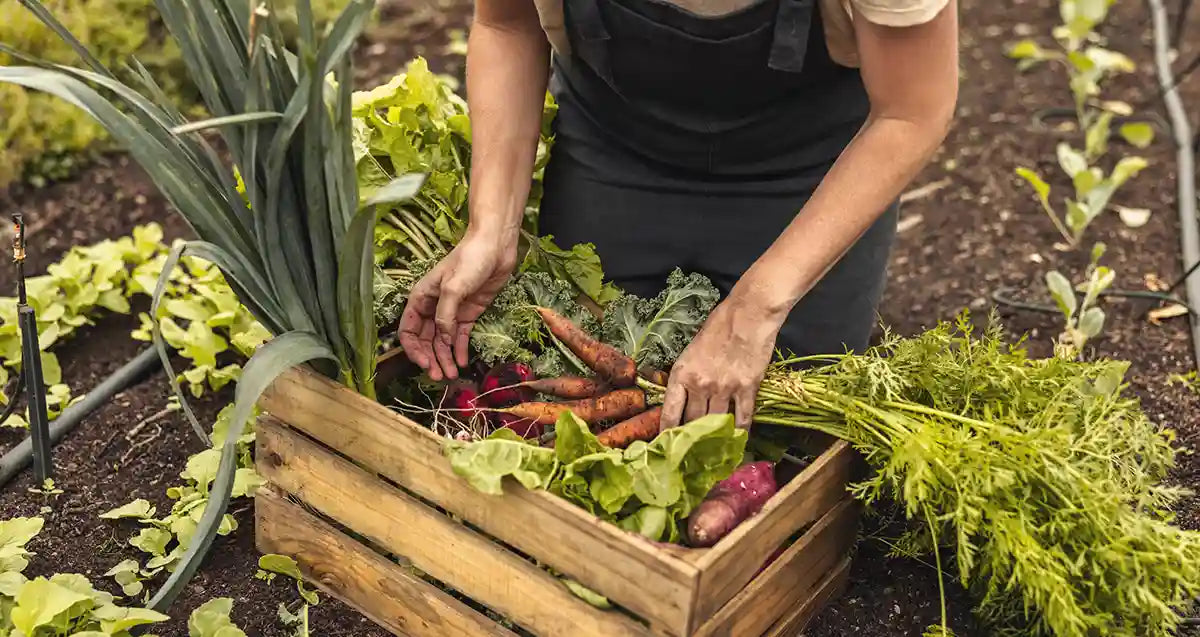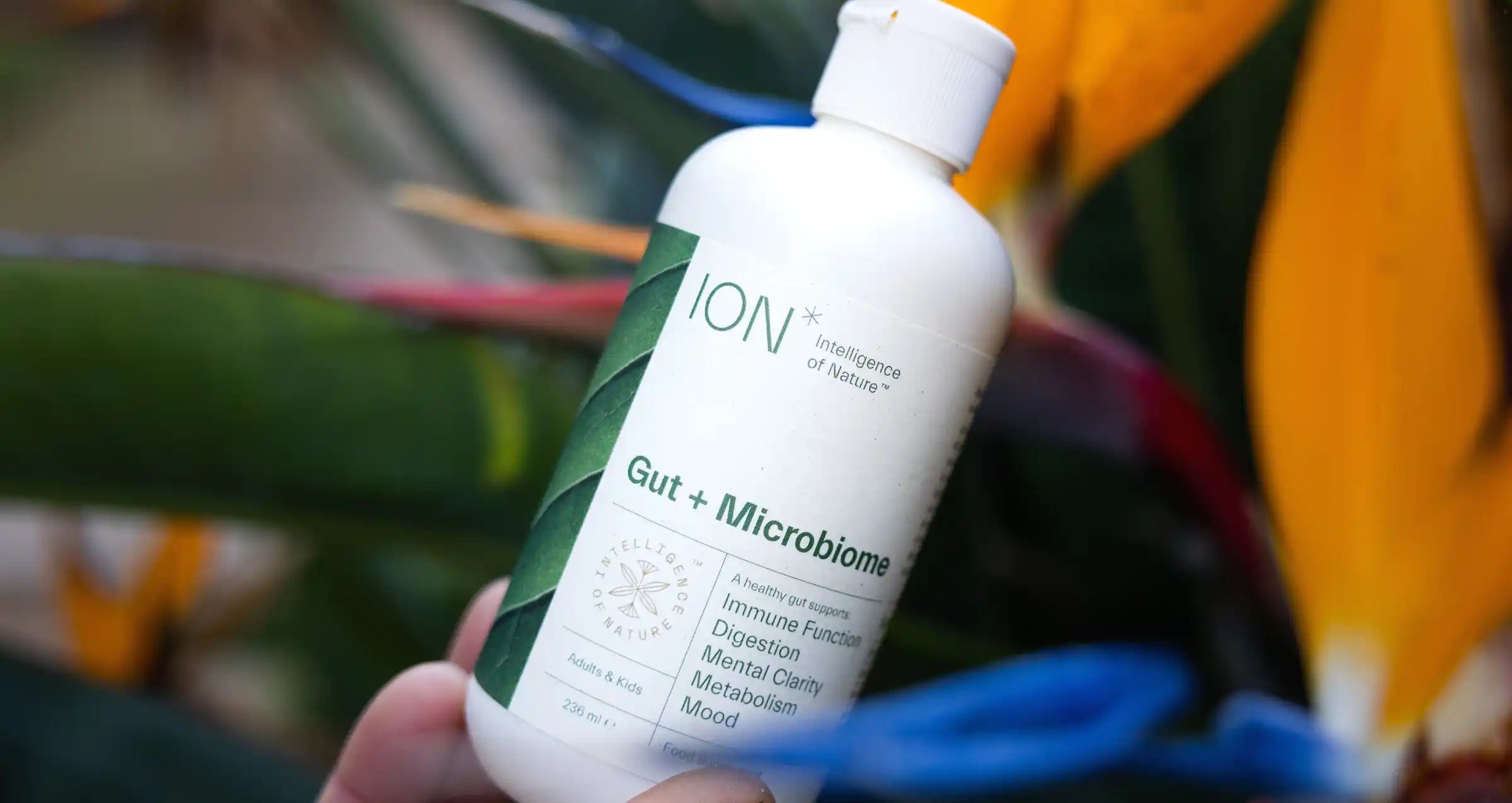By Eve Kalinik
Have you ever really considered where your food comes from? And by which I mean where it fundamentally begins - the soil. In fact, many of us might not think beyond the supermarket or grocery store where we purchase our food let alone all of the various links that play a vital role in keeping our food system functioning. But if we take it back to the farmer, land, labour, and seed, before anything else it ultimately starts with the soil in which it was grown.
What is soil, anyway?
We might think of soil as just, well, ‘dirt’ but actually soil contains a super dynamic ecosystem that houses an expansive variety of microbes as well as other minerals and important nutrients. It has a critical role in environmental factors like carbon sequestering as well as determining both the nutritional density of our food and on a more individual level supporting our own internal gut ecosystem. Therefore when thinking about our food and our health in general we need to think not just about what we are eating but how we have grown it. Essentially what our food is eating.
Soil and regenerative agriculture
Studies are now showing that regenerative agriculture is the best type of farming to support a more nutrient-dense and healthier soil. The term regenerative agriculture has been around for a while but there has been much more of a resurgence over the past 5-6 years. Regenerative agriculture is a system of farming practises that draws together key principles to help enrich soil health by increasing the biodiversity of its microbiome, preventing erosion, and increasing water. It can be done through various methods including crop rotation, sustainable manure, animal grazing, and no-till farming as a few examples. Regenerative agriculture has been shown to not only support the composition and hydration of the soil but also improve the nutrition density of crops and livestock. It is really working with nature. As the trailblazer in regenerative agriculture, Gabe Brown, succinctly puts it ‘regenerative agriculture is a real paradox: the best way to achieve it is to do less, not more’.
Allowing this more natural life cycle to unfold also results in the production of humic substances which forms the basis of healthy soil and feeds back into this very same cycle. Just like the soil of our planet needs to be enriched so does that of our gut microbiome which is why humic extract is the key ingredient in ION* Gut + Microbiome to support the very foundation of our gut health. A part of this same ethos, ION* works closely with Farmers Footprint to support a system of regenerative agriculture which founder Zach Bush and I discussed in a recent interview together. It really is closing that loop.
Why healthy soil is important
The fact is we can all feed into the same cycle of life and we need to find ways to help support a healthier soil for the sake of our current and future generations and the health of our planet. Major national food companies are now committing to partners who practise regenerative farming and it has been heavily promoted by NGOs and civil society so there is a much wider change happening. Furthermore, in a recent report by Mintel , consumers stated that they would pay more for produce produced regeneratively - this was also in the midst of a global cost of living crisis, so it seems we are all wanting to strive to make better choices. Indeed, with more people talking about the topic it will bring a greater awareness, understanding, and priority on the matter. Just remember that all of the nutrients from our food which nourish our gut come from the soil so it is vital we support a holistic, and ultimately healthier, system and buy regeneratively and mindfully as much as we can.
REFERENCES
Banerjee S & van der Heijden MGA (2022) ‘Soil microbiomes and one health’ Nat Rev Microbiol. 2023 Jan;21(1):6-20. doi: 10.1038/s41579-022-00779-w. Epub 2022 Aug 23.
Montgomery DR, Biklé A, Archuleta R, Brown P, Jordan J. 2022. Soil health and nutrient density: preliminary comparison of regenerative and conventional farming. PeerJ 10:e12848 https://doi.org/10.7717/peerj.12848
Frąc M et al (2022) ‘Soil mycobiome in sustainable agriculture’ Front Microbiol. 2022 Nov 28;13:1033824. doi: 10.3389/fmicb.2022.1033824. eCollection 2022.
Giller KE et al (2021) ‘Regenerative Agriculture: An agronomic perspective’ Outlook Agric. 2021 Mar;50(1):13-25. doi: 10.1177/0030727021998063. Epub 2021 Mar 2.
Cusworth G, Lorimer J, Brice J & Garnett T (2022) ‘Green rebranding: Regenerative agriculture, future-pasts, and the naturalisation of livestock’ Trans Inst Br Geogr. 2022 Dec;47(4):1009-1027. doi: 10.1111/tran.12555. Epub 2022 Jul 8.




